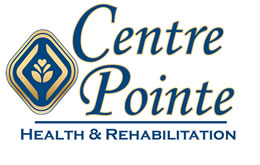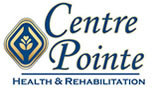Home is the location where you feel in control and correctly oriented in space and time. It is a protected and predictable location. Yet more mishaps occur in our houses than any other location.
For individuals over age 65, house is the most likely place for an injury to occur from a fall. Falling is the single leading reason for home accidents in older adults.
According to AARP, “Approximately one in four U.S. locals aged 65 years (or older) report falling each year.” Twenty percent of those falls cause a major injury, such as a fracture or head trauma. And nearly 3 million individuals wind up in healthcare facility emergency clinic as the result of a spill.
” If you’re going to age in place in the house, it’s important to deal with any concerns that could threaten your security,” states Geoff Fraser, partner of Clear Choice Health Care
To offset potential risks and lessen your fall risk, here are six methods to assist keep you safe.
” One step that many individuals ignore as they address their balance, is the pal system. If you live alone, make sure that someone is watching out for you,” says Geoff Fraser “Have a relative, pal, or neighbor check in on you as soon as a week by phone or face to face to ensure you’re safe,” says Fraser
2. Practice balance exercises. Exercise in general benefits us, but for preventing falls, specific balance exercises reinforce the muscles that support you and keep you upright. “Starting treatment with a specialist in balance exercises may be the best path however talk with a medical professional to see if physical treatment is right for you,” says Fraser.
3. Get your vision inspected. It may appear obvious, however bad vision throws off your contrast and depth understanding and your capability to see things clearly. That action that’s right in front of you might be neglected. In particular, presbyopia– the loss of close vision– becomes more common as we age. Also, aging eyes have trouble adjusting to various light conditions.
To compensate for any vision changes, professionals recommend a see to an eye doctor for a complete eye test once every year or two.
4. Try tai chi. – Tai Chi is a system of Chinese exercises designed to improve relaxation, health and balance. A review of research studies released in 2017 in the Journal of the American Geriatric Society discovered that over an one-year duration, practicing tai chi reduced the rate of falls by 43%. Research study shows that it’s particularly beneficial for fall prevention amongst elders because it requires slow motion outside the center of mass and can challenge postural muscles that keep people upright. Reinforcing leg muscles in a range of single leg stance postures with a narrow base of assistance and trying to accomplish balance on one leg can equip older adults with the ability to recuperate from a vertigo. With time, balance enhances and transitional motion from one exercise to the next becomes more fluid and managed.
5. Wear the right shoes. “Many older individuals use ill-fitting shoes, and we know that ill-fitting shoes are associated with foot problems,” says research study lead author Hylton B. Menz of the Lower Extremity and Gait Studies Program in the Australia’s La Trobe University – School of Allied Health.
Menz says basic footwear is too narrow for the public and issue feet with bunions, hammertoes and claw toes will end up being a lot more sensitive when pressing into tight-fitting shoes.
A great deal of shoe stores offer suggestions on footwear, but if you require guidance on foot mechanics, and how to reduce foot discomfort, that’s usually best left to professionals in physical motion.
” A physical therapist can perform a foot evaluation, evaluate how you stroll, and assist manage and decrease foot discomfort,” says Fraser. He includes that analyzing strolling patterns offers helpful details that can help clients decrease threat of re-injury and pain.
According to Fraser, physical therapy can recommend simple modifications in footwear, and possible use of orthotics. But adding and enhancing flexibility to muscles can bring security and soothing changes to one’s mechanics and strolling patterns.
Walking barefoot or in socks can have risks, too. A current research study discovered 52% of participants who fell were barefoot or wearing socks or slippers. If you wish to prevent falls, use shoes that fit your foot snugly which have a low heel and a nonskid sole.
You could do all the above to enhance your security, however if your balance is “off”– you’re still at high danger for a fall.
As you age, your reflexes are dampened and everything that adds to balance can begin to break down. Not just does your vision decreases and offsets your ability to clearly see things, your muscles damage.
Compounding issues like medical conditions (diabetes, thyroid problems, low high blood pressure) can prevent balance along with conditions like Parkinson’s illness and arthritis. Not surprisingly, Foot issues can likewise eliminate your sensation of a firm structure while you stroll.
Your worry of falling increases when you observe a growing sense of unsteadiness. It’s ironic, the more scared of falling you are, the more likely you are to fall. “You begin preventing all the exercises you enjoy; your body becomes deconditioned and will take a toll on your balance,” says Fraser.
Fraser states we need all systems to be in sync for better balance and “treatment can deal with the concerns that enhance balance.”
Part of the balance system are the inner ear, which house the vestibular system and assists you perceive your body’s position in space. As your muscles shift position to stable yourself, your eyes scan the path for challenges. Any modifications in the course are gotten by your nerves, which collect details from your sensory organs and send them to your brain. This will permit you to react immediately to any modifications in your position or environment.
“When your medical professional advises, let’s interact to much better your balance,” says Fraser.






